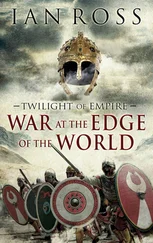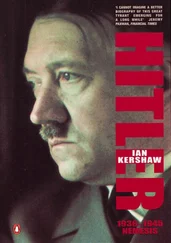45. Anonyma , pp. 171, 174 (9.5.45), 207 (17.5.45); Goeschel, ‘Suicide at the End of the Third Reich’, p. 160; Goeschel, Suicide in Nazi Germany , pp. 158–9.
46. Goeschel, ‘Suicide at the End of the Third Reich’, pp. 162–3 and n. 57.
47. Goeschel, ‘Suicide at the End of the Third Reich’, p. 169.
48. Klaus-Dietmar Henke, Die amerikanische Besetzung Deutschlands , Munich, 1995, pp. 964–5; and see Goeschel, ‘Suicide at the End of the Third Reich’, pp. 169–70.
49. ‘Tief vergraben, nicht dran rühren’, Spiegel Special , 2 (2005), p. 218. I am most grateful to Klaus Wiegrefe and Michael Kloft for this reference. See also for the atmosphere of panic and numerous suicides, many out of fear of being raped by soldiers of the Red Army, Joachim Schulz-Naumann, Mecklenburg 1945 , Munich, 1989, pp. 161, 165, 173, 241–2 (accounts given in the 1980s).
50. Based on the recollections of the events in ‘Tief vergraben, nicht dran rühren’, Norbert Buske, Das Kriegsende 1945 in Demmin: Berichte, Erinnerungen, Dokumente , Schwerin, 1995, pp. 9–14, 17–40, 43, 44 n. 3, 48–50, nn. 27–39; and the eyewitness account of Waltraud Reski (née Gülzow), interviewed by Tilman Remme, in BBC Archives, The Nazis: A Warning from History (1997), written and produced for BBC2 by Laurence Rees, roll 263, pp. 1–42 (quotation, p. 29). See also Goeschel, ‘Suicide at the End of the Third Reich’, p. 166.
51. Die Niederlage 1945 , p. 420.
52. BA/MA, N54/8, NL Keitel, ‘Die letzten Tage unter Adolf Hitler’, fo. 19.
53. Die Niederlage 1945 , p. 447 (16.5.45); 1945: Das Jahr der endgültigen Niederlage der faschistischen Wehrmacht. Dokumente , ed. Gerhard Förster and Richard Lakowski, Berlin, 1975, pp. 422–5.
54. Hillmann, pp. 46–7; DZW , 6, p. 770; Die Niederlage 1945 , pp. 429–30 (5.5.45).
55. BA/MA, N54/8, NL Keitel, ‘Die letzten Tage unter Adolf Hitler’, fo. 19.
56. IfZ, ZS 145, Schwerin von Krosigk, Bd. I, fo. 24, Eidesstattliche Erklärung, Nuremberg 1.4.49 im Spruchverfahren gegen Ernst Wilhelm Bohle.
57. IfZ, ZS 145, Schwerin von Krosigk, Bd. III, fo. 62, 7.12.62.
58. Die Niederlage 1945 , pp. 431–2, Dönitz-Tagebuch, Tagesniederschrift 6.5.45; IfZ, ZS 145, Schwerin von Krosigk, Bd. III, fo. 62, 7.12.62.
59. Hillmann, pp. 5–7. Dönitz had initially wanted to change the leadership of the Wehrmacht. He and Krosigk agreed that Keitel and Jodl would be dismissed and replaced by Field-Marshal Erich von Manstein as the new head of the Wehrmacht. But the whereabouts of Manstein (according to one version) could not be located.—Walter Baum, ‘Der Zusammenbruch der obersten deutschen militärischen Führung 1945’, Wehrwissenschaftliche Rundschau , 10 (1960), p. 255. In another account, Manstein said he had been summoned by the OKW to meet Dönitz without being given a reason. He could not attend that day and heard no more about it. Dönitz told Krosigk that Manstein had declined to take over from Keitel, which was not the case.—Lutz Graf Schwerin von Krosigk, Es geschah in Deutschland , Tübingen and Stuttgart, 1951, p. 374.
60. IfZ, ZS 145, Schwerin von Krosigk, Bd. III, fo. 62 v, 7.12.62; Schwendemann, p. 18.
61. IfZ, ZS 1810, Großadmiral Karl Dönitz, Bd. II, fos. 60–61, ‘Letzte Kriegszeit als Ob.d.M. Zeit als Staatsoberhaupt’, no date; Lüdde-Neurath, pp. 81–2.
62. Müller and Ueberschär, p. 103. Major-General Dethleffsen recalled some months later (BA/MA, N648/1, NL Dethleffsen, Erinnerungen, fo. 57) that he had been unable to resist pointing out to the NSFO of Army Group Vistula on hearing the news of Hitler’s death that he should think overnight of a new form of greeting since ‘Heil Hitler’ was now out of date. The thought turned out to be a little premature.
63. DZW , 6, p. 776, lists some of the sentences by military courts and the executions that followed.
64. IWM, EDS, H1, 2.5.45. Printed in 1945: Das Jahr der endgültigen Niederlage der faschistischen Wehrmacht , pp. 361–4. When Dönitz had consulted Ribbentrop about a new Foreign Minister, the latter had been able to think of no one more suitable for the post than himself.—Lüdde-Neurath, p. 82.
65. The ‘Tagesniederschriften’, taken down by Dönitz’s adjutant, Korvettenkapitän Walter Lüdde-Neurath, exist in BA/MA, N374/8, NL Friedeburg with copies in IWM, EDS, F.3, AL2893. They are quoted here from the printed version in Die Niederlage 1945 , p. 421 (2.5.45). Hillmann sees Dönitz’s attempt to work through partial capitulations as continuity rather than ‘a new characteristic of policy’, since most of Hitler’s paladins had at one time or another tried to gain a ‘separate peace’ or partial capitulation. This overlooks the fact that, before Hitler’s death, such actions remained ‘unofficial’, undertaken behind his back, or were blocked at the outset, whereas once Dönitz became head of state they became overnight official policy.—Hillmann, pp. 48–9. Dönitz repeated in a statement soon after the end of the war that he regarded an immediate total capitulation as impossible for Germany. The horror at what the Soviets had done was so strong that an immediate general capitulation, abandoning the soldiers in the east and the refugee civilian population to the Red Army, ‘would have been a crime against my German people’, and the order would not have been followed by German troops, who would have continued to try to fight their way to the west.—IfZ, ZS 1810, Karl Dönitz, Bd. II, ‘Kriegsende 1945’, 22.7.45, fo. 3.
66. DZW , 6, p. 426.
67. NAL, Premier 3/221/12, nos. 3736–7, fos. 413–15, Churchill to Eden, 16.4.45, fos. 392–3, Eisenhower to Combined Chiefs of Staff, 23.4.45, fo. 361, Eisenhower to Combined Chiefs of Staff, 1.5.45. See also Bob Moore, ‘The Western Allies and Food Relief to the Occupied Netherlands, 1944–45’, War and Society , 10 (1992), pp. 106–9. I am grateful to Bob Moore for providing me with these references.
68. Die Niederlage 1945 , pp. 421 (2.5.45), 425 (3.5.45); BAB, R3/1625, fos. 4–5, Blaskowitz to Lüdde-Neurath, n.d. (30.4.45; the original telex in BA/MA, RM7/854, fo. 177, has no date, though 30.4 is pencilled in the top right-hand corner); Seyß-Inquart ‘an den Führer’ (i.e. to Dönitz), 2.5.45. For Blaskowitz’s stance in the last days of the war, see John Zimmermann, Pflicht zum Untergang: Die deutsche Kriegführung im Westen des Reiches 1944/45 , Paderborn, 2009, pp. 340–41.
69. Keitel pointed out that the news took Dönitz by surprise but that he supported it.—BA/MA, N54/8, NL Keitel, ‘Die letzten Tage unter Adolf Hitler’, fo. 20.
70. BA/MA, N574/19, NL Vietinghoff, ‘Kriegsende in Italien’ (1948), fo. 45; also Förster, p. 56.
71. BA/MA, N574/19, NL Vietinghoff, ‘Kriegsende in Italien’ (1948), fos. 53–4.
72. IWM, EDS, F.3, M.I. 14/284 (A), Kaltenbrunner to Hitler, 1.5.45.
73. DZW , 6, pp. 152–3.
74. BA/MA, N574/19, NL Vietinghoff, ‘Kriegsende in Italien’, fos. 56–9.
75. IWM, EDS, F.3, M.I. 14/284 (A), Kesselring to Dönitz, Keitel and Deputy Chief, Wehrmacht Operations Staff, General Winter, 2.5.45.
76. BA/MA, N574/19, NL Vietinghoff, ‘Kriegsende in Italien’ (1948), fos. 60–62. For Kesselring’s account, see The Memoirs of Field-Marshal Kesselring , Greenhill Books edn., London, 1997, pp. 288–9. See also, for the capitulation in Italy, DZW , 6, pp. 749–52; DRZW , 10/1 (Zimmermann), p. 472.
77. BA/MA, RW44II/3, fo. 20, Winter to Jodl, 2.5.45.
78. Die Niederlage 1945 , p. 423 (2.5.45); Schwendemann, p. 18.
Читать дальше












